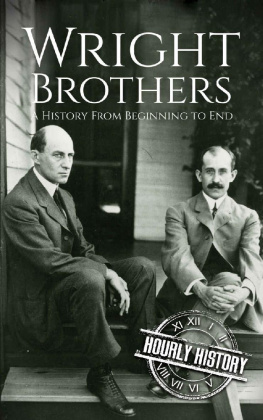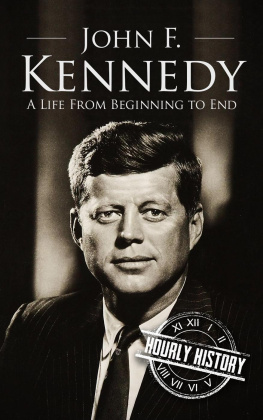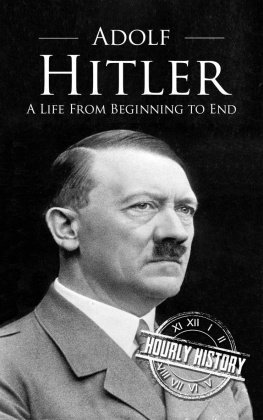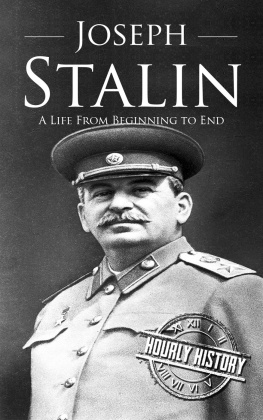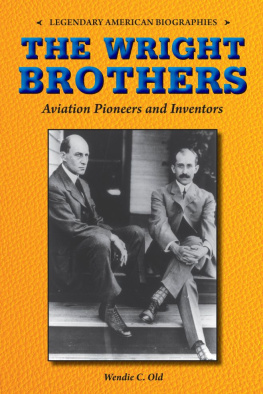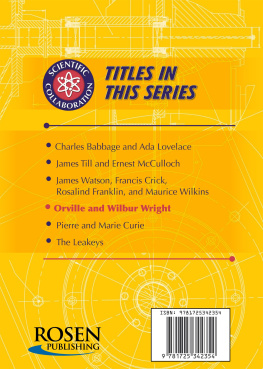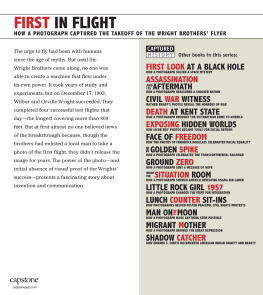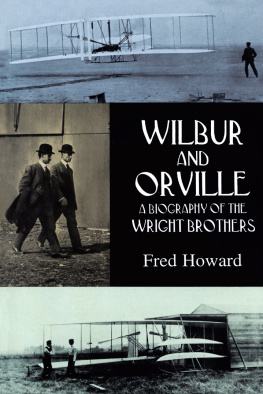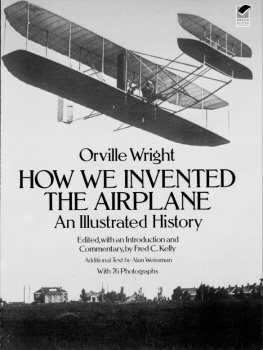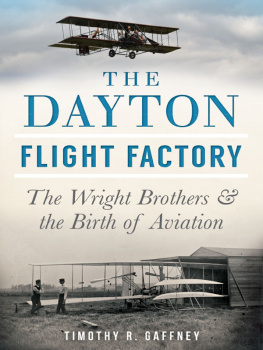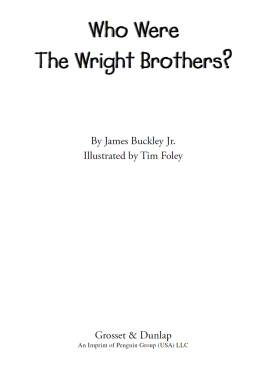THE WRIGHT BROTHERS
A History From Beginning to End
Copyright 2017 by Hourly History.
All rights reserved.
Table of Contents
Introduction
As early as 1000 BCE, kites began to swoop through the air in China. In Europe during the late fifteenth century, Leonardo da Vinci worked to develop his famous concepts for flying machines. Less than 300 years later, in 1783, the Montgolfier brothers hot air balloon carried a man into the air. Human imagination had always soared skywards, but now the sky began to seem more accessible. As the eighteenth century progressed, movement toward a machine that could raise humans into the heavens in controlled flightbegan to take off. From the landmark publication of George Cayleys On Aerial Navigation in 1809 to the successful flight of a manned glider in 1896, human flight started to look like a real possibility at last.
Just after the turn of the century, Orville and Wilbur Wright entered the scene with their celebrated first flight at Kill Devil Hills, disproving a famous scientist who had recently declared powered human flight to be impossible. The flight the Wright brothers made in 1903 was not only monumental because it was poweredusing an engine to propel the machinebut also because it was sustained, controlled, and made in a heavier-than-air aircraft. The Wright brothers landmark achievement proved that the dream of flight, which many had worked toward and believed in, was possible.
But the brothers first flight is the middle of their story, not the beginning or the end. Orville and Wilbur spent many years working hard and experimenting before they achieved flight. After 1903, they would go on to make further aeronautical history as they first tried to convince the world of what they had achieved and then continued to take part in the development of flight. In this book, you will discover their complete story: how two imaginative and intelligent yet unassuming boys from Dayton turned their attention from printing and bicycles to building flying machines, and how they changed the world in the meantime.
Chapter One
The House at 7 Hawthorne Street
We were lucky enough to grow up in a home environment where there was always much encouragement to children to pursue intellectual interests; to investigate whatever aroused curiosity.
Orville Wright
In 1878, when Wilbur Wright was eleven and his brother Orville was seven, their father, Milton, returned home from a trip with a surprise for the two boys. As the young children watched in astonishment, the toy their father presented whizzed up toward the ceiling, propelling itself through the air. The toy was a tiny helicopter, made by the French inventor Alphonse Penaud. Though the helicopter soon broke, Wilbur and Orville would long remember this moment as a significant one in their livesthe moment when their thoughts first turned toward the puzzle of flight.
For young Wilbur and Orville, their lives were characterized by invention and exploration. They had the support of their family as they pursued various endeavors and interests. Orville came up with many creative schemes, which frequently turned a profitfrom putting on a quite successful and well-attended circus with the taxidermy animals of a friends father to making and selling kites. Orville was clever and advanced quickly in school, though he was a bit of a troublemaker. Wilbur, four years older, read widely and became an excellent writer. The brothers worked together on some projects, such as making a large latheone of the first of their mechanical experiments.
The brothers inventiveness did not develop in a void. They came from a family of adventurous individuals. Several of their ancestors were pioneers. Susan, the boys mother, was known for her creative ability to adapt any tool at hand to suit her needs. Milton, their father, had moved across the United States to Oregon for two years to teach before returning to Indiana. In 1869, the family, including two-year-old Wilbur and his older brothers Reuchlin and Lorin, moved to Dayton, Ohio. Here, they purchased the house at 7 Hawthorne Street where both Orville and younger sister Katharine were born. Though the family lived in Cedar Rapids and then Richmond, Indiana, from 1878 to 1884, they kept the house in Dayton and were able to return to it. This move back to Dayton impacted Wilbur since he was about to graduate from high school. He did not think the ceremony of graduation was worth the 50-mile trip back to Richmond, and so he never received his diploma.
Around the time the family returned to Dayton, when Orville was 12, his mechanical interests turned to printing. He tried making woodcuts and prints, at first using a tool he made himself, and later tools that were a gift from Wilbur. To make prints, he used his fathers letter-press. As Orvilles interest in printing continued and increased, his family took note. Wilbur and Lorin traded away a boat they had built in exchange for a small printing press. Milton Wright, the boys father, bought Orville a collection of type. While Orville had great fun and earned small amounts of money with this little press, printing pages only four and a half inches high, as time went on, he began to want a larger press. Instead of buying a new press, Orville soon built his own. He also spent two summers working with a printing company in Dayton.
Meanwhile, an accident marred older brother Wilburs life. A hockey stick struck Wilbur directly in the face while he and some friends were playing a skating game called shinny. The impact knocked out Wilburs top front teeth. Due to the accident, and possibly because of a heart condition as well, Wilbur went from being athletic and energetic to mostly staying at home, caring for his ill mother.
Orvilles creativity and interest in all things mechanical made him return to the idea of building his printing presses again in 1888 when he was 17 years old. This time, he wanted to make an even bigger press. He began work on the frame, using mainly wood the family already had on hand. However, the task of completing the press proved to be more complicated than Orville had anticipated. Wilbur stepped in to help his younger brother out. Wilbur proved to be especially genius with the mechanical aspects of the press, coming up with solutions that sometimes seemed entirely counterintuitive. Still, it worked, and now that Orville had a press, the younger brother decided to put it to use by starting a newspaper. A perpetual entrepreneur and not one to do things halfway, Orville rented a room for the press and began work on the first issue of the West Side News, which came out in March 1889. The paper started to enjoy success fairly quickly, and soon Wilbur, too, became involved. He began by writing occasional articles to help Orville fill space, but before long, he was listed as the papers editor.
Just a few months later, in July 1889, tragedy struck the Wright family in the form of the death of Susan Wright. In the space following the death of their mother, Orville and Wilbur spent much time with the family, where they all engaged in activities such as extensive reading. Orville and Wilbur also continued their work together on West Side News.
Before long, Orville finished high school. He did not consider the last year, spent largely on review, to be worthwhile. Consequently, like Wilbur, Orville never received a diploma. Busy with running a successful newspaper, he decided not to attempt to go to college. A little over a year after the papers conception, Orville and Wilbur changed their weekly publication ofthe West Side News into a daily publication, The Evening Item. However, the competition was becoming intense, and the endeavor only lasted about four more months. Orville and Wilbur did continue to publish a small local paper called

